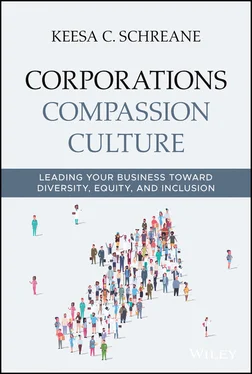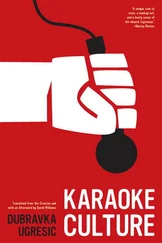Unfair, unleveled business playing fields are a primary aspect of the old corporate culture that leaders must address. It is not enough to talk about them—what's needed is concrete action. If businesses want to benefit from top talent, these practices have got to go.
Right now you may be thinking, “Okay, sure. But how?” One step is to educate ourselves as corporate leaders about the history of how businesspeople have created heinous work conditions, exploited inequality, and ultimately benefitted long term from our lopsided system. Consider these observations author Ta-Nehisi Coates made in The Atlantic:
By 1860, there were more millionaires (slaveholders all) living in the lower Mississippi Valley than anywhere else in the United States. In the same year, the nearly 4 million American slaves were worth some $3.5 billion, making them the largest single financial asset in the entire U.S. economy, worth more than all manufacturing and railroads combined. 33
Those benefits still pay business dividends today. Although no monetary value can adequately compensate for historical abuses, Blacks have yet to see any sort of reparations, be they social, economic, or professional. What's more, lack of pay parity, psychologically abusive discrimination, and large-scale exclusion from higher levels of the economic system are still taking place.
We are dealing with a different type of playing field in modern times; for instance, there is an entire body of law related to the physical protection to workers. However, it's difficult to legislate unethical, uncompassionate workplace behaviors, especially ones that don't yield physical damage. Today's behaviors attack employee psyche and often challenge their ability to work effectively and bring their most innovative selves due to equivocal tones and language used.
The common term for these subtler types of workplace abuses is microaggressions . Kevin Nadal, professor of psychology at John Jay College of Criminal Justice, describes the term this way: “Microaggressions are defined as the everyday, subtle, intentional—and oftentimes unintentional—interactions or behaviors that communicate some sort of bias toward historically marginalized groups. The difference between microaggressions and overt discrimination—or macroaggressions—is that people who commit microaggressions might not even be aware of them.” 34
A prevalent example is when underrepresented people are left out of relevant meetings or electronic communications or they aren't included on inside knowledge that other colleagues share at virtual watercoolers. These are all tactics that keep them ill-informed for key decision-making, resulting in poor positioning when it's time to discuss succession planning and promotion.
Following are other examples that destroy trust between colleagues and stoke hostility and distrust, all of which affect performance:
Isolating a colleague or having unspoken agreements to not address and acknowledge that person inside and outside of meetings
Ignoring her comments in meetings
Talking over her in meetings
Refusing to share critical information
Refusing to include him in meetings critical to job functions
Discrediting her feedback and performance, including doing so in front of peers and management
Participating in misplaced conversation about physical attributes
Making condescending remarks about origin or pronunciation of his name
Selfish, thoughtless behavior isn't solely the experience of people of color, of course. But these behaviors are used successfully and pervasively to create an uncomfortable, sometimes toxic environment for people of color. Further, when microaggressions go unchecked, they are an opportunity to circumvent protections against workplace racism.
When aggressors are called on the carpet for their behavior, a common response is to say, “It was just a little joke.” Or that the person of color is being “too sensitive.” If people of color challenge low performance ratings with clear evidence of outperforming consistently, an intimidating response meant to shut the employee down is “I can get someone very senior (translation = old friend) to back me up.”
The phrase “bring your whole self to work” was a recent, popular statement encouraging people of different backgrounds to not wear “the mask” that Paul Lawrence Dunbar wrote about in the poem We Wear the Mask . 35 Workers were asked to be open, vulnerable, and completely untethered to past unspoken rules concerning assimilating within mostly White corporate environments.
The “bring your whole self to work” era brought neither decreased microaggressions nor increased numbers of people of color to the C-suite and pay parity with White colleagues. Undercutting Blacks' ability to thrive professionally, and using microaggression and intimidation, has been a part of our corporate business culture for decades. This has continued, whether we wear the mask or not. And, as I discussed at the beginning of the chapter, every microaggression—every false allegation about performance, every moment of isolation in a meeting, every condescending comment—comes at the cost of worker confidence, productivity, and even the bottom line.
A 2020 report by McKinsey on 17 leading companies demonstrated a significant correlation between a diverse leadership team and financial performance. 36 Leadership representation matters. Increased revenue is generated in these spaces that are diverse at the executive level. In particular, companies that were in the top tier for cultural and ethnic diversity on their executive teams were 33% more likely to have industry-leading profitability. We can add compassion to that metric to ensure that diverse candidates who are recruited are also retained, in part because of a welcoming culture, in the corporate workplace.
Interestingly, many times people of color who experience workplace injustices tend to either overlook them or work through a mental assumption that their race or ethnicity has nothing to do with what may just be a personality difference.
Idris lives in the United Kingdom and describes himself as Afro- Caribbean. His career as a marketing executive for banking firms has spanned nearly two decades. “I'm the first person who really wouldn't use my color in this way. Just speaking to some of my Black friends who are outside the industry, who've looked at my career who have looked at my skill set. My friends keep telling me, you know, if you were this [race], trust me, you would not have these situations. In this case, I believe them.”
The grave mistrust Blacks have pertaining to workplace treatment and corporate establishment may have begun with how their ancestors were treated as forced laborers, but it didn't end there. Throughout the 19th and 20th centuries, we can find examples of White-led terror and violence against Black workers and their entrepreneurial endeavors. Today, dealing with the mental impact of workplace microaggression, while simultaneously processing ongoing physical violence against Black and Latinx people in public spaces, continues to take a toll. This sets a backdrop for current racial justice demands in the workplace and beyond. In other words, the pursuit of racial justice is not separate from the compassionate workplace—it is a vital component.
Perhaps most disturbing is the fact that unethical behavior, exclusion, and inequality at work have a long and sordid history—a history that employers don't acknowledge and make no attempt to correct. The fact that we're still fighting for racial justice well into the 21st century confirms those behaviors are still alive and well. To see the link between historic injustices and today's injustices, simply replace discriminatory treatment, lack of pay, and workplace abuse from the past with today's discriminatory treatment, pay inequity, and unchecked microaggressions, and we find a connection. Racial discrimination just takes a different form in the 21st century than it did in the 19th or even 20th centuries.
Читать дальше












